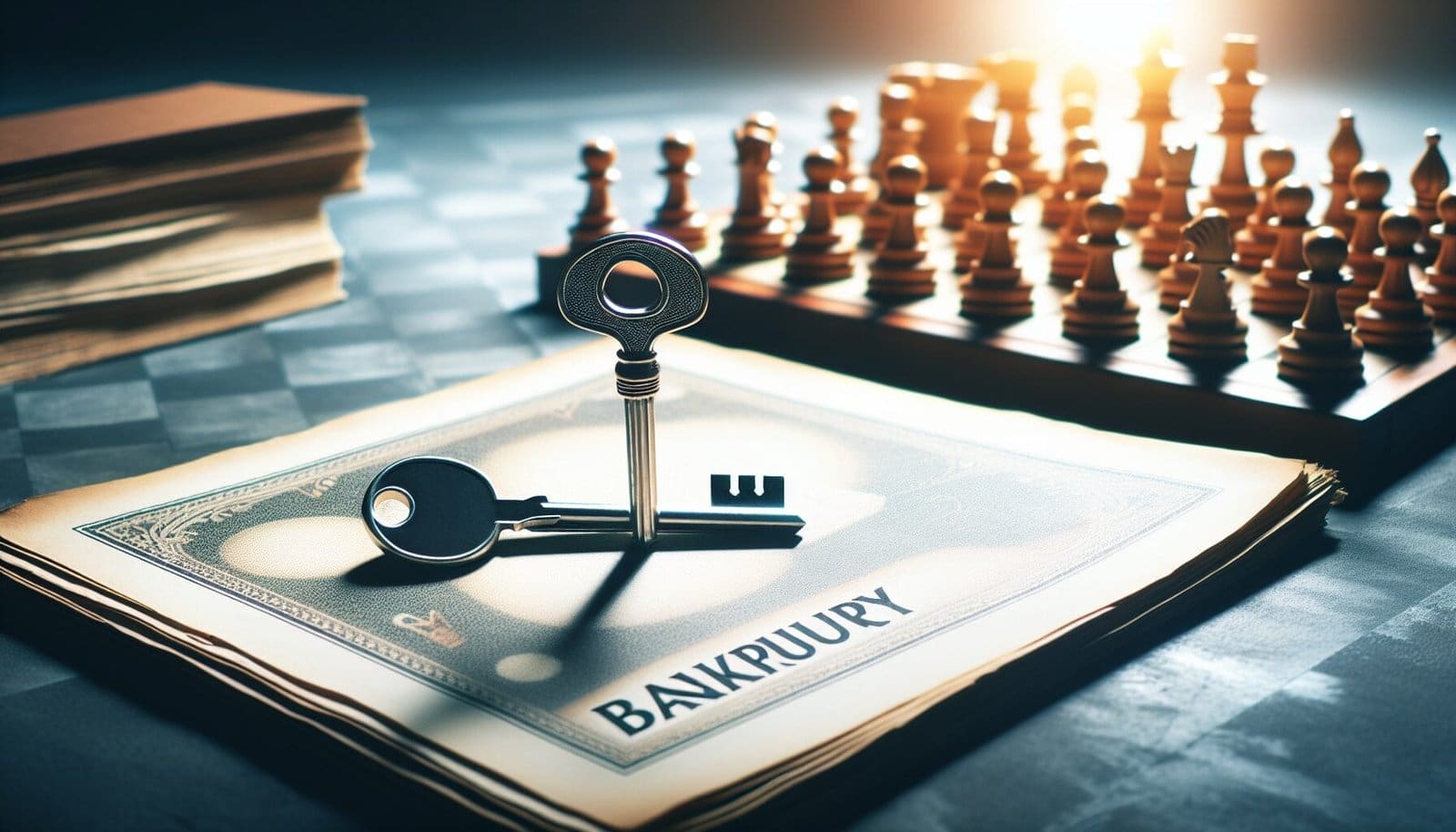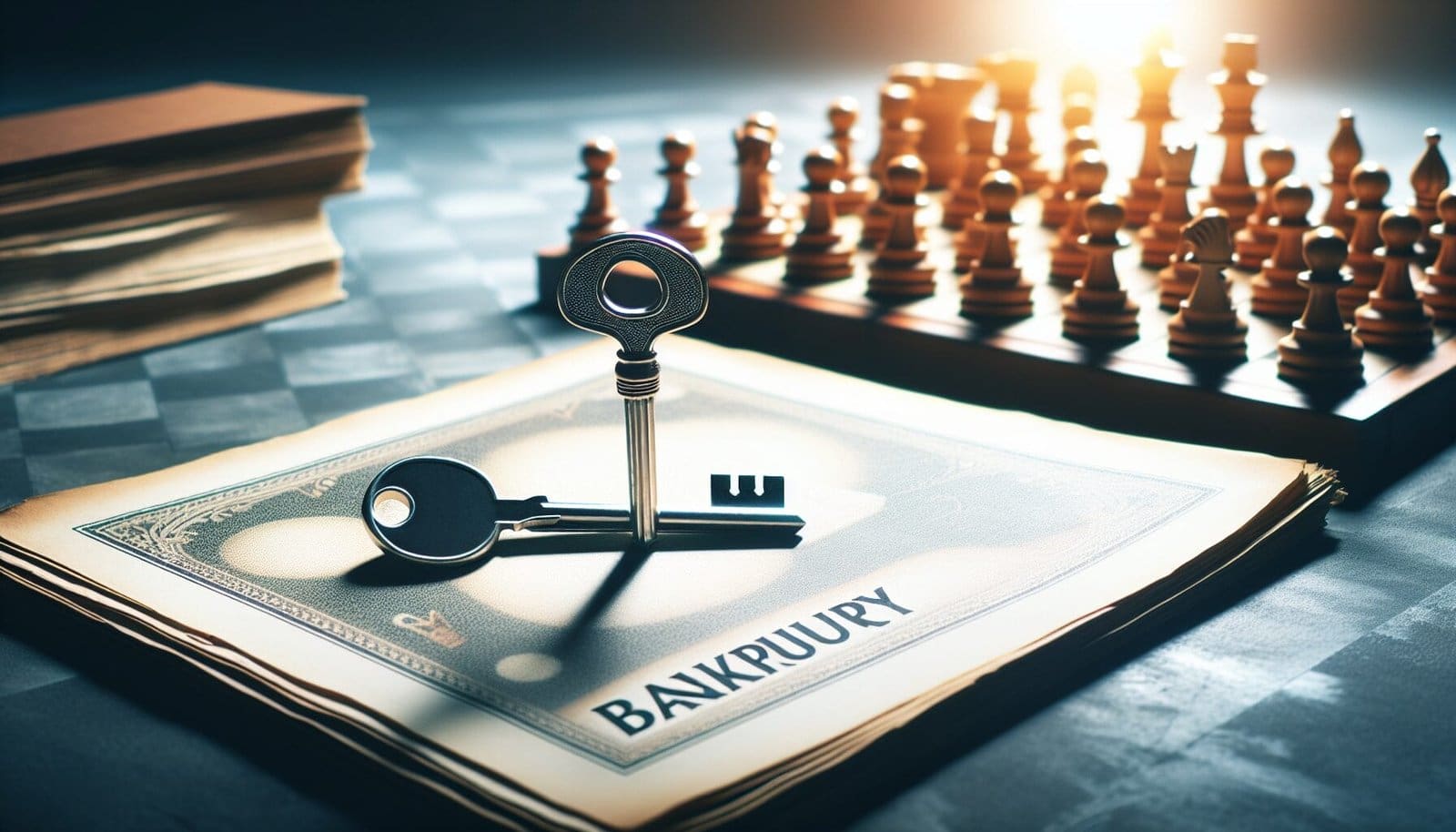Are you feeling overwhelmed after filing for bankruptcy? Don't worry, we've got you covered! In this article, we will share effective strategies to help you rebuild your credit and regain financial stability after bankruptcy. We understand that this can be a challenging time, but with the right approach and determination, you can bounce back stronger than ever. From creating a budget and establishing a savings plan, to utilizing secured credit cards and monitoring your credit report, we will guide you through a step-by-step process to rebuilding your credit and securing a brighter financial future. So, let's get started on this journey together!
Rebuild Your Credit With These Strategies
Understanding Bankruptcy
Bankruptcy is a legal process that individuals or businesses go through when they are unable to repay their debts. It provides a fresh start by eliminating or reducing debts and allowing individuals to regain control of their financial lives. There are different types of bankruptcy, each with its own set of rules and requirements.
Types of bankruptcy
The two most common types of bankruptcy for individuals are Chapter 7 and Chapter 13. Chapter 7 bankruptcy, also known as liquidation bankruptcy, involves the sale of non-exempt assets to repay creditors. This type of bankruptcy typically lasts for a few months and allows individuals to discharge most of their debts.
On the other hand, Chapter 13 bankruptcy, also known as reorganization bankruptcy, involves the creation of a repayment plan to pay off debts over a period of three to five years. This type of bankruptcy allows individuals to keep their assets while repaying a portion of their debts.
Impact of bankruptcy on credit
Filing for bankruptcy has a significant impact on one's credit score. It remains on your credit report for seven to ten years, depending on the type of bankruptcy filed. During this time, it may be challenging to obtain new credit or loans, and if you are approved, you may face higher interest rates.
Rebuilding credit after bankruptcy
Rebuilding credit after bankruptcy is crucial to regain financial stability. While it may seem like a daunting task, there are steps you can take to gradually rebuild your creditworthiness and improve your credit score.
Assessing Your Current Financial Situation
Before embarking on the journey to rebuild your credit, it is essential to assess your current financial situation. This involves reviewing your credit report, identifying outstanding debts, and analyzing your income and expenses.
Reviewing your credit report
Obtaining a copy of your credit report and reviewing it thoroughly is the first step in assessing your financial situation. You can request a free copy of your credit report from the three major credit bureaus once a year. Carefully review the report to ensure accuracy and make note of any outstanding debts or negative items.
Identifying outstanding debts
Take inventory of all your outstanding debts, including credit card balances, loans, and any other financial obligations. Make a list of each debt, noting the amount owed, the interest rate, and the minimum monthly payment required.
Analyzing your income and expenses
Examine your income and expenses to determine your disposable income, which is the amount you have available for debt repayment and living expenses. Compile a list of your monthly income from all sources and subtract your essential expenses, such as rent or mortgage, utilities, groceries, and transportation costs. This analysis will help you understand your financial capabilities and make informed decisions about budgeting and debt repayment.

Effective Ways To Bounce Back From Bankruptcy
Creating a Realistic Budget
Once you have assessed your current financial situation, it is time to create a realistic budget. A budget will serve as a roadmap for managing your finances and ensuring you allocate funds appropriately for debt repayment and living expenses.
Calculating your disposable income
Using the information gathered from analyzing your income and expenses, calculate your disposable income. This is the amount left after deducting your essential expenses from your monthly income. It is crucial to have a clear understanding of this number as it will guide your budgeting decisions.
Prioritizing expenses and debt payments
With your disposable income in mind, prioritize your expenses and debt payments accordingly. Start by ensuring you meet your basic needs, such as housing, utilities, and food. Then, allocate funds towards debt repayment, focusing on high-interest debts first. Make at least the minimum payment on each debt to avoid further damage to your credit.
Seeking professional financial advice
If you find it challenging to create a budget or prioritize your expenses, consider seeking professional financial advice. Financial counselors or credit counseling agencies can provide guidance and assist in developing a personalized plan to rebuild your credit and manage your finances effectively.
Building an Emergency Fund
As you work towards rebuilding your credit, it is crucial to prioritize the creation of an emergency fund. Having a safety net in place will help you avoid falling into further debt when unexpected expenses arise.
Understanding the importance of an emergency fund
An emergency fund is a savings account specifically designated for unforeseen expenses such as medical bills, car repairs, or job loss. It serves as a financial cushion that allows you to cover these expenses without resorting to credit cards or loans.
Setting realistic saving goals
Start by setting realistic saving goals for your emergency fund. Aim to save three to six months' worth of living expenses, including rent or mortgage payments, utilities, groceries, and other essential costs. Break down this goal into monthly or weekly savings targets to make it more manageable and achievable.
Automatic savings mechanisms
Make saving for your emergency fund easier by setting up automatic transfers from your checking account to a separate savings account. This way, a portion of your income is automatically earmarked for savings before you have a chance to spend it. Consistency is key when it comes to building an emergency fund, and automatic savings mechanisms can help you stay on track.

Get Back On Track By Following These Credit-rebuilding Tips
Obtaining Secured Credit Cards
Secured credit cards are a useful tool for rebuilding credit after bankruptcy. They require a security deposit, which serves as collateral for the credit limit granted. Using a secured credit card responsibly can help demonstrate your creditworthiness and rebuild your credit history.
Understanding how secured credit cards work
Secured credit cards work similarly to traditional credit cards. However, the credit limit is typically equal to the amount of the security deposit. Regular and timely payments on the secured credit card will be reported to the credit bureaus, helping you establish a positive payment history.
Researching reputable secured credit card offers
When searching for a secured credit card, it is essential to research reputable offers. Look for cards with low annual fees and reasonable interest rates. Avoid cards with excessive fees or predatory terms that can hinder your progress in rebuilding your credit.
Using secured credit cards responsibly
To reap the benefits of a secured credit card, it is crucial to use it responsibly. Make small purchases that you can easily afford to pay off in full each month. This will demonstrate responsible credit usage and improve your credit score over time. Avoid maxing out your credit limit or carrying a balance as it can negatively impact your credit utilization ratio.
Applying for a Credit-Builder Loan
Credit-builder loans are another effective tool for rebuilding credit after bankruptcy. These loans are specifically designed for individuals with poor or no credit and can help establish a positive payment history.
Understanding credit-builder loans
Credit-builder loans are unique in that the funds are held in an account and released to you once the loan is fully repaid. This type of loan allows you to make small monthly payments over a set period while building credit.
Finding suitable lenders or credit unions
To apply for a credit-builder loan, search for suitable lenders or credit unions that offer this type of product. Look for institutions that report payments to the credit bureaus, as this is essential for rebuilding your credit history.
Managing credit-builder loan payments
Make your credit-builder loan payments on time and in full each month to establish a positive payment history. Treat this loan as a priority and ensure it is included in your budget. Over time, consistent and timely payments will demonstrate your creditworthiness and improve your credit score.
Effective Strategies for Rebuilding Credit After Bankruptcy
Using Small Credit-Building Loans
Small credit-building loans can be another effective strategy for rebuilding credit after bankruptcy. These loans are typically low-value and are repaid over a short period, allowing them to be easily managed and build positive payment history.
Exploring options for small loans
Research financial institutions or credit unions that offer small credit-building loans. These loans may have lower interest rates and extended repayment terms specifically designed to help individuals rebuild their credit.
Building positive payment history with small loans
Make timely payments on your small credit-building loans, just as you would with any other loan. Consistency and responsible payment behavior contribute to building a positive credit history and improving your credit score.
Staying within your budget when using small loans
When using small loans to rebuild credit, it is crucial to stay within your budget. Only borrow what you can comfortably afford to repay, and ensure that the loan payments fit into your overall financial plan. Avoid taking on excessive debt that could potentially hinder your progress.
Becoming an Authorized User on Someone's Account
Another strategy to rebuild credit is by becoming an authorized user on someone else's credit account. This involves being added as a user on a credit card or another credit account held by a person with good credit.
Understanding the concept of being an authorized user
When you become an authorized user, the account holder's payment history and credit utilization become a part of your credit history. This can benefit you if the account has a long history of timely payments and low credit utilization.
Choosing a reliable person with good credit
Selecting the right person to become an authorized user with is crucial. Choose someone with good credit and responsible credit behavior. It is essential to maintain open communication with the account holder and ensure both parties understand the expectations and responsibilities involved in this arrangement.
Ensuring responsible credit usage as an authorized user
While being an authorized user can improve your credit score, it is vital to use credit responsibly. Avoid overspending or abusing the privileges provided by the account. It is essential to maintain a good relationship with the person allowing you to be an authorized user and ensure their trust is upheld.
Keeping Tabs on Your Credit Report
Regularly monitoring your credit report is essential for rebuilding credit after bankruptcy. It allows you to track your progress, identify any errors or inaccuracies, and ensure that positive changes are being reported correctly.
Understanding the significance of monitoring your credit
Monitoring your credit report enables you to stay informed about your credit history and any changes that may impact your credit score. It allows you to address any issues promptly and ensure that your credit information remains accurate.
Obtaining free copies of your credit report
By law, you are entitled to a free copy of your credit report from each of the three major credit bureaus – Equifax, Experian, and TransUnion – once a year. Take advantage of this opportunity to review your credit reports regularly.
Disputing any errors or inaccuracies on your report
If you notice any errors or inaccuracies on your credit report, take immediate steps to dispute them. Contact the credit bureau and provide any supporting documentation to rectify the situation. Correcting these errors can significantly impact your credit score and ensure your credit report reflects accurate information.
Practicing Responsible Credit Usage
Finally, one of the most important aspects of rebuilding credit after bankruptcy is practicing responsible credit usage. By developing good credit habits, you can maintain a positive credit history and continue to improve your credit score.
Making timely payments
Consistently making timely payments on all your debts is crucial for rebuilding credit. Pay your bills on time every month, including credit card bills, loans, and any other financial obligations. Late payments can have a severe negative impact on your credit score, so it is essential to prioritize timely payment.
Keeping credit utilization low
Credit utilization refers to the percentage of available credit that you are using. Aim to keep your credit utilization below 30%. High credit utilization can negatively impact your credit score, so it is crucial to use credit responsibly and avoid maxing out your credit limits.
Avoiding excessive new credit applications
While it is important to have a mix of credit accounts, avoid applying for excessive new credit all at once. Each new credit application results in a hard inquiry on your credit report, which can temporarily lower your credit score. Only apply for credit when necessary and ensure it aligns with your budget and financial goals.
Rebuilding credit after bankruptcy requires time, patience, and commitment. By following these steps and practicing responsible credit usage, you can gradually improve your creditworthiness and regain financial stability. Remember, rebuilding credit is a journey, and every positive financial decision you make brings you one step closer to a brighter financial future.





